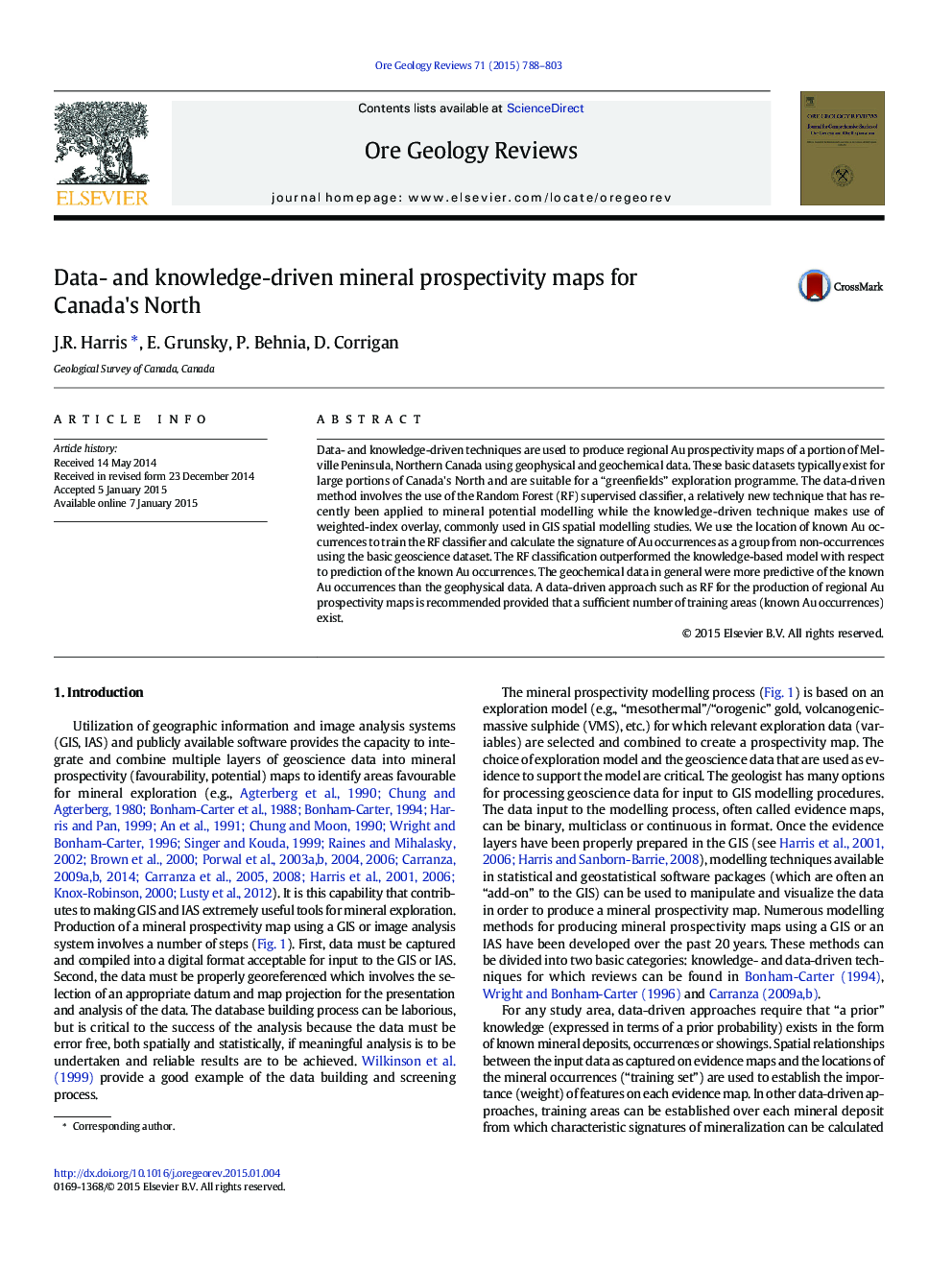| Article ID | Journal | Published Year | Pages | File Type |
|---|---|---|---|---|
| 4697051 | Ore Geology Reviews | 2015 | 16 Pages |
Data- and knowledge-driven techniques are used to produce regional Au prospectivity maps of a portion of Melville Peninsula, Northern Canada using geophysical and geochemical data. These basic datasets typically exist for large portions of Canada's North and are suitable for a “greenfields” exploration programme. The data-driven method involves the use of the Random Forest (RF) supervised classifier, a relatively new technique that has recently been applied to mineral potential modelling while the knowledge-driven technique makes use of weighted-index overlay, commonly used in GIS spatial modelling studies. We use the location of known Au occurrences to train the RF classifier and calculate the signature of Au occurrences as a group from non-occurrences using the basic geoscience dataset. The RF classification outperformed the knowledge-based model with respect to prediction of the known Au occurrences. The geochemical data in general were more predictive of the known Au occurrences than the geophysical data. A data-driven approach such as RF for the production of regional Au prospectivity maps is recommended provided that a sufficient number of training areas (known Au occurrences) exist.
